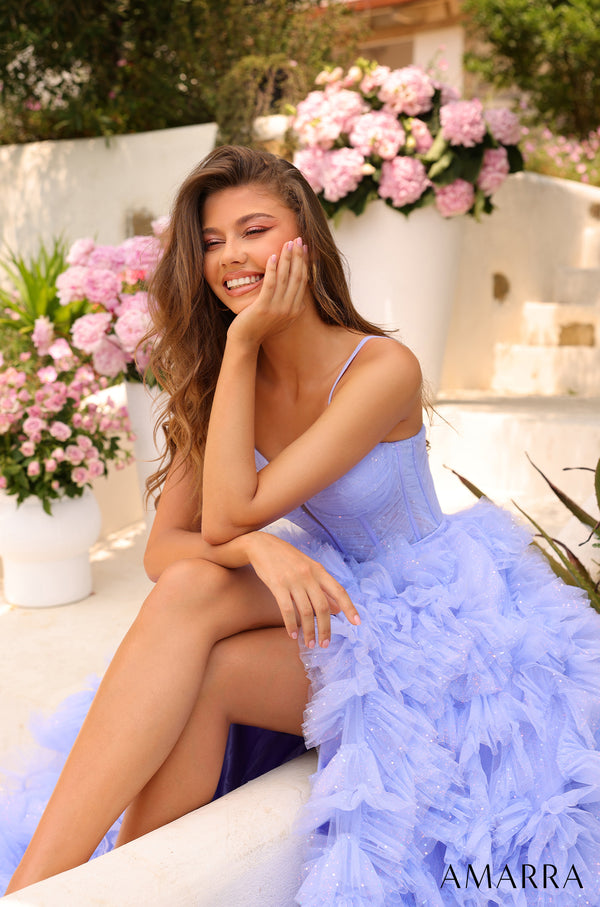Your Cart is Empty



At first glance, Quinceañeras might seem rad and modern, right? For many fifteen-year-old Latin American girls, the things they love about it are pretty ancient.
Believe it or not, this excellent tradition goes way back to 500 B.C. with the Aztecs. It's like time travel, so join us in unraveling the fascinating history of Quinceañera celebrations.
With this, let's dive into the past with our guide that discusses the history of Quinceañeras.

In ancient Mesoamerica, girls were seen as women when they turned fifteen—crucial for a culture focused on raising future warriors. Fast forward to 18th-century Spain, where the Duchess of Alba hosted a fancy party, giving teenage girls their first taste of formal wear.
Later, Empress Carlotta of Mexico followed suit, introducing her court's teenage daughters to society as potential brides.
Over time, the Quinceanera's purpose shifted. It wasn't just about becoming a mother anymore. As to the current date, it symbolises a girl becoming a woman. The celebration blends Aztec roots with Spanish and Catholic traditions, echoing through the ages, even in today's festivities.

In a classic Mexican Quinceañera, there were always boy-girl duos, known as damas and chambelanes, dancing and hanging out with the birthday girl. Think of it like a Quinceañera squad!
The birthday girl had a special guy by her side, the man of honor. [Imagine him as her main wingman]. Potential suitors and their gifts were introduced to the birthday girl and her family.
Before any thoughts of marriage, the birthday girl had a blast with wise women who gave her tips about her future tasks. They also reminded her to stick to cultural customs and follow the correct life path. It's like a pre-wedding pep talk.

While Quinceañera celebrations can be distinct, many cultures maintain a connection to the Catholic Church.
One big hint is having a Holy Mass before all the fun begins. It's not just a party starter—it's also a way to thank God for all the good things the family has, especially the girl turning fifteen.
So, in almost every culture, the Quinceañera gets three extraordinary things during her ceremony.
Additional items commonly included are a rosary and a prayer book. The rosary holds particular importance as it marks her transition to adulthood, replacing the child-sized one she likely received during her first communion.
The prayer book symbolises her entry into a life of devout piety, aligning with the expectations for adults of her gender.

Beyond the religious elements integral to a Quinceañera celebration, additional symbols mark the girl's journey into womanhood.
The initial symbol is the dress worn to her party. This attire typically mirrors her style and choices while retaining certain aspects of the traditional Quinceañera gown. It serves as her inaugural adult dress, akin to an evening gown, signifying a shift in societal status.
A classic Quinceañera dress resembles a wedding gown, both being garments worn to signify a significant shift in societal roles. The Quinceañera gown represents the transition from childhood to young womanhood, while the wedding gown marks the shift from a single woman to the status of a wife.

This doll, adorned in attire resembling the Quinceañera's gown, signifies the final doll she will ever play with and is commonly handed down to her younger sister during or after the celebration.
In this ritual, she switches from the slippers or flats worn during the Mass and the initial stages of the party, accompanied by more formal jewellery. These actions serve as additional indicators of the transition from a young girl.
Other "womanly" milestones are observed in certain families, such as the Quinceañera's permission to tweeze her eyebrows, shave her legs, apply makeup, attend adult parties, and socialise with young men.

The Quinceañera boasts a lengthy and culturally rich history. When coupled with the ongoing enthusiasm and zest with which it is celebrated today, this coming-of-age ceremony will likely continue to be a vital part of the lives of many Latin American girls.
In contrast to the Sweet 16 and Debutante Balls in Western cultures, the Quinceañera stands as the Latin culture's unique rendition, paying tribute to the young females in their families.
Moreover, it serves as a beacon of hope, symbolising that the Quinceañera girl's future will shine as brightly and beautifully as she does on this remarkable day!
Explore more about Quinceañera traditions and discover more gorgeous Quinceañera dresses at Amarra!

 Top 10 Quinceañera Dress Trends for 2025: Find Your Dream Look
Top 10 Quinceañera Dress Trends for 2025: Find Your Dream Look  Guide To Planning Your Teenager's Sweet 16 Party
Guide To Planning Your Teenager's Sweet 16 Party  Why Are Quinceanera Dresses So Big and Poofy?
Why Are Quinceanera Dresses So Big and Poofy?  Radiant Hues: Trending Colors for Quinceanera Celebrations
Radiant Hues: Trending Colors for Quinceanera Celebrations  How to Pick Your Quinceañera Dress Color
How to Pick Your Quinceañera Dress Color  Tips To Have A Perfect Makeup Look for Your Quinceanera
Tips To Have A Perfect Makeup Look for Your Quinceanera  Quinceanera: A Closer Look at Tradition and Celebration
Quinceanera: A Closer Look at Tradition and Celebration  Preparing for Your Quinceañera: A Step-by-Step Guide
Preparing for Your Quinceañera: A Step-by-Step Guide  Quince Dresses: Tips On Finding The Right Dress
Quince Dresses: Tips On Finding The Right Dress  QUINCEAÑERA DRESSES THROUGH TIME (HISTORY)
QUINCEAÑERA DRESSES THROUGH TIME (HISTORY) Join our newsletter and and be the first to hear about all the things we have coming your way.
